
The number one problem most landscapers have with growing their business, besides finding decent employees, is having almost too much work currently, but not being able to justify incurring the expenses of an additional full-time worker or crew. In other words, your margins are too narrow and you’re realizing quantity plus volume does not equal sustainable growth.
So how do you grow?
You have to take a step back and look at whom your customers are, where they’re located and what value you offer. You have to get rid of the low-quality customers and fill your schedule with high-quality clients located near each other.
These high-quality, high return-on-investment (ROI) clients aren’t something out of a fairy tale, and your market isn’t bad or simply oversaturated with competition. You just have to know where to find them and how to communicate with them.
Here are five-and-a-half ways to find quality lawn care customers:
1. Know Your Audience
Your audience isn’t just anyone willing to pay for your service. It’s your best customer multiplied 10,000 times. It isn’t Micromanaging Mark or Cheapskate Chelsey. It’s Heather from 42 Wallaby Way who always pays on time, and thanks you for the quality and dependable work you and your crew deliver. She and her husband work 50 hours a week, and are always busy taking the kids to soccer practice or work has them traveling too much to be able to maintain their own lawn.
She doesn’t care or even want to look at pricing from another lawn care service because you always provide quality work on a consistent and dependable basis. If you aren’t able to make it due to rain, you let her know. Whatever she’s paying, she’s happy with the value she’s receiving.
Take Heather and multiply her by 10,000. Create personas like your ideal customers—maybe three to five different personalities of different clients—these are your target market.
2. Know How to Target
Point number one wasn’t just a fun exercise. If these are your ideal clients, there are more like them in your area. Now it’s time to target them. Ask yourself a series of questions about your ideal clients:
- What neighborhood are they located in and what’s it like?
- What kind of income do they make? What’s their property worth?
- How big is their lot size?
- Do they care more about quality or price?
- How do they consume media? What social media outlets are they on and how are they using them?
- How would they look for a new service provider? Do they care about how professional you look online? Do they ask neighbors? Do they use social media to search for service providers?
Most of these questions you should already know; others you may have to simply ask your existing customers and, a lot of times, this can be done in a survey. If you run radio ads, ask your ideal customers what stations they listen to.
You have to know where the majority of your quality customers are. I can tell you right now, the majority of them aren’t using Facebook Marketplace, Craigslist or even Nextdoor. That’s not to say you can’t get good customers there; it’s just where the price shoppers like to hover.
3. Tailor Your Message
Once you know your ideal customers and where they are, you have to understand how to communicate with them. Ask yourself:
- What kind of language do they use?
- How do they make decisions—price, value, dependability or appearance?
- What kind of people are they?
Your message doesn’t have to be the same across the board; in fact, I advise against that. You should have three to five customer personas at minimum, so you should have three to five different messages. You may have three different messages to target three different customers:
- One based on price—“Save 10 percent on a six-step fertilization treatment when you prepay.”
- One based on value—“Dependable, honest and always on time.”
- One based on appearance—“The industry experts that grow and maintain a healthy lawn all year long.”
Knowing what kind of qualities your ideal customer is looking for, you can tailor your message to where that type of customer may be. Deliver door hangers in their area with the tailored message; target affinity audiences on social media based on income, location and personality traits; and get off platforms where the majority of these customers are not.
Note: A price message is not the best option to shoot for if you’re looking for high-quality customers who aren’t going to try to get discounts. It can be used to add influence to the overall value message, but should not be the sole message.
4. Establish Your Value Offer
Stating you are the most reliable or provide the best quality work isn’t a value statement or offer. They’re generic terms like: “Customer satisfaction guaranteed!” Fine diners don’t go to a five-star restaurant to leave feeling satisfied. They go to leave ecstatic, thrilled and impressed.
If your value statement was you provide the best quality work, then try something like: “Quality service that’s fit for royalty.” If your value statement was you’re the most reliable, then say something like: “Never worry about your lawn needs again with the most reliable service in the (your location) area.”
A value statement is not only something that sets you apart from the competition, but also speaks to your customers’ needs and wants. But the best value offer is one that can’t be easily ripped off by a competitor—“Voted the number one landscaping business in (your location) for quality service,” for example.
Hint: If your value offer includes words and phrases like cheap, affordable, lowest price or some variation of best price, you can expect to attract the same customers you’re trying to get rid of.
5. Pick Your Routes
Your ideal customers are on the same route as each other. Because ideal customers aren’t just people willing to pay for the value you offer, ideal customers also contribute to lower operating expenses, which means less distances traveled and a more optimized route with better route density.
Ideal customers plus route density equals sustainable growth. Stick to your routes with high-quality customers. Get referrals, do five or seven go-rounds with door hangers, target those neighborhoods with social media advertising. Do what you can to dominate the neighborhoods your ideal customers are in.
5.5. Know Your Worth
Don’t sell yourself short. You’re worth more than being nitpicked and low-balled. You are the professional and you set your price, not your customer. You don’t need to be the highest, but you should still be in the top 60 to 70 percent.
The profit from one good customer can pay for three bad ones, and the lack of stress from one good one can pay for 10 bad ones. Knowing your worth means you have to start saying no to a lot more leads. This may scare you at first, but Harvard isn’t Harvard because it lets everyone in.
Scale back before you scale up. Create a highly profitable growth model before you create more operating expenses. Invest in marketing and find your business 1,000 Heathers.
![Author Bio Pic 300x300 5c420a7fd70fc[1] Headshot](https://img.greenindustrypros.com/mindful/acbm/workspaces/default/uploads/2025/11/author-bio-pic-300x3005c420a7fd70fc1.3qvEpLwlt6.png?auto=format%2Ccompress&crop=faces&facepad=3&fit=crop&h=48&q=70&w=48)


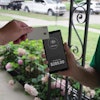


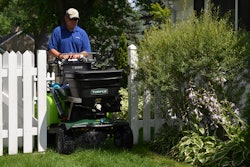
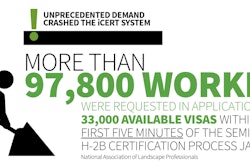



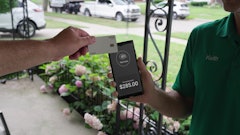



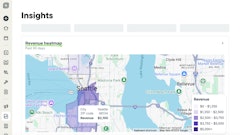
![Gravely Pro Turn Mach One My23 Dsc03139 Edit 1200x800 5b2df79[1]](https://img.greenindustrypros.com/mindful/acbm/workspaces/default/uploads/2025/10/gravely-pro-turn-mach-one-my23-dsc03139-edit-1200x800-5b2df791.BucBnDoN22.jpg?ar=16%3A9&auto=format%2Ccompress&fit=crop&h=135&q=70&w=240)



